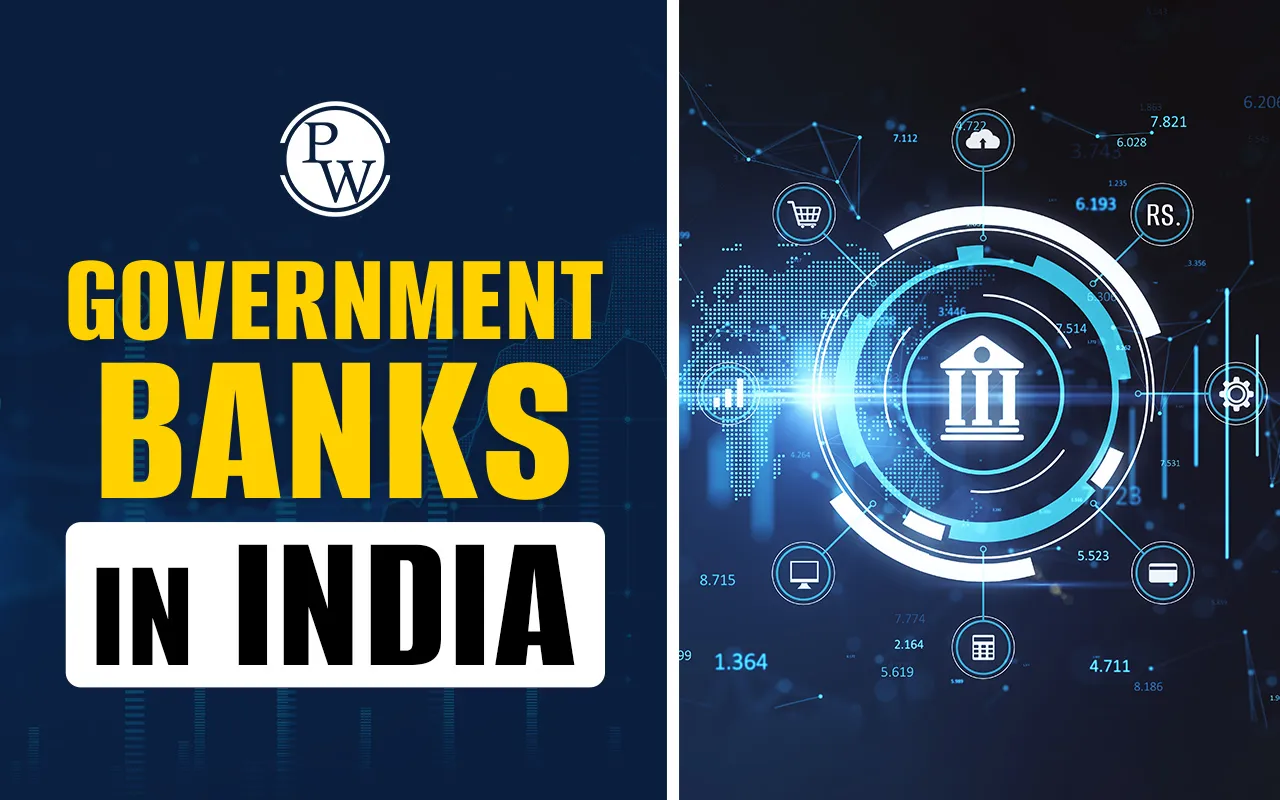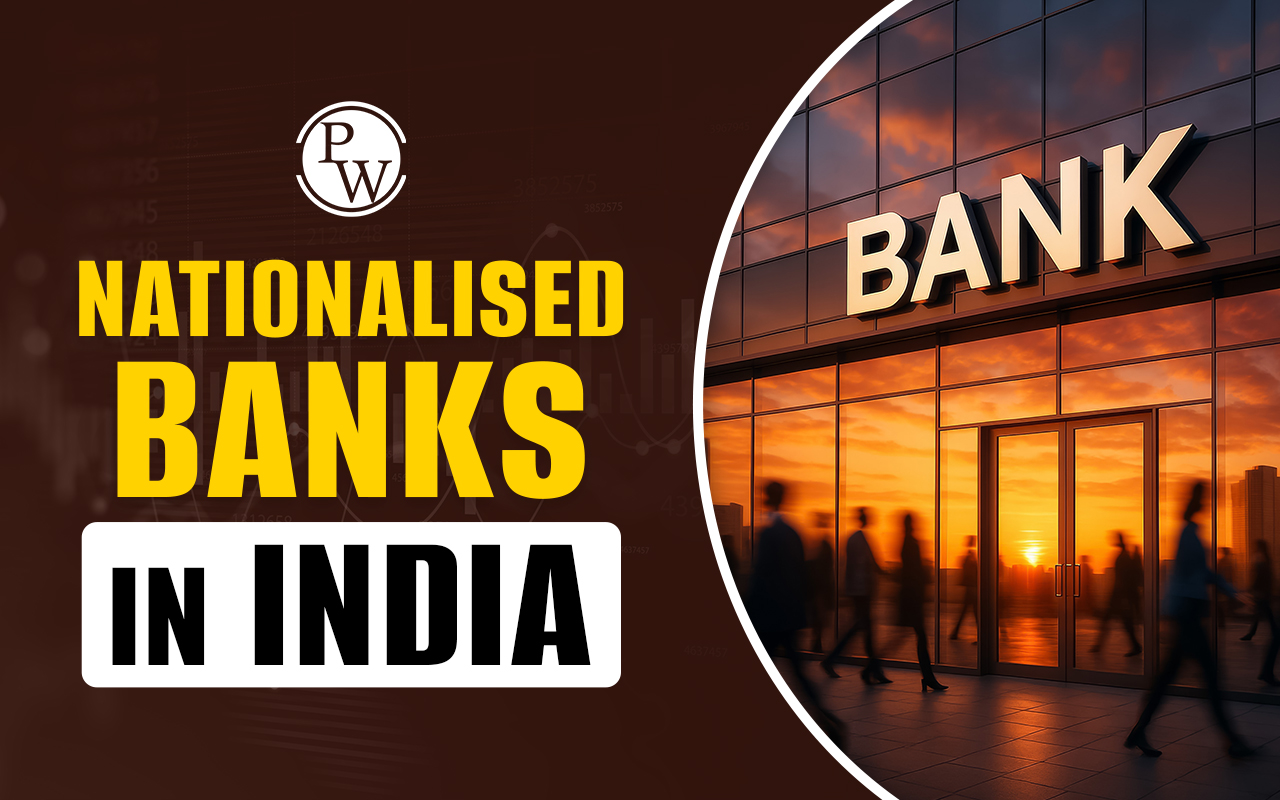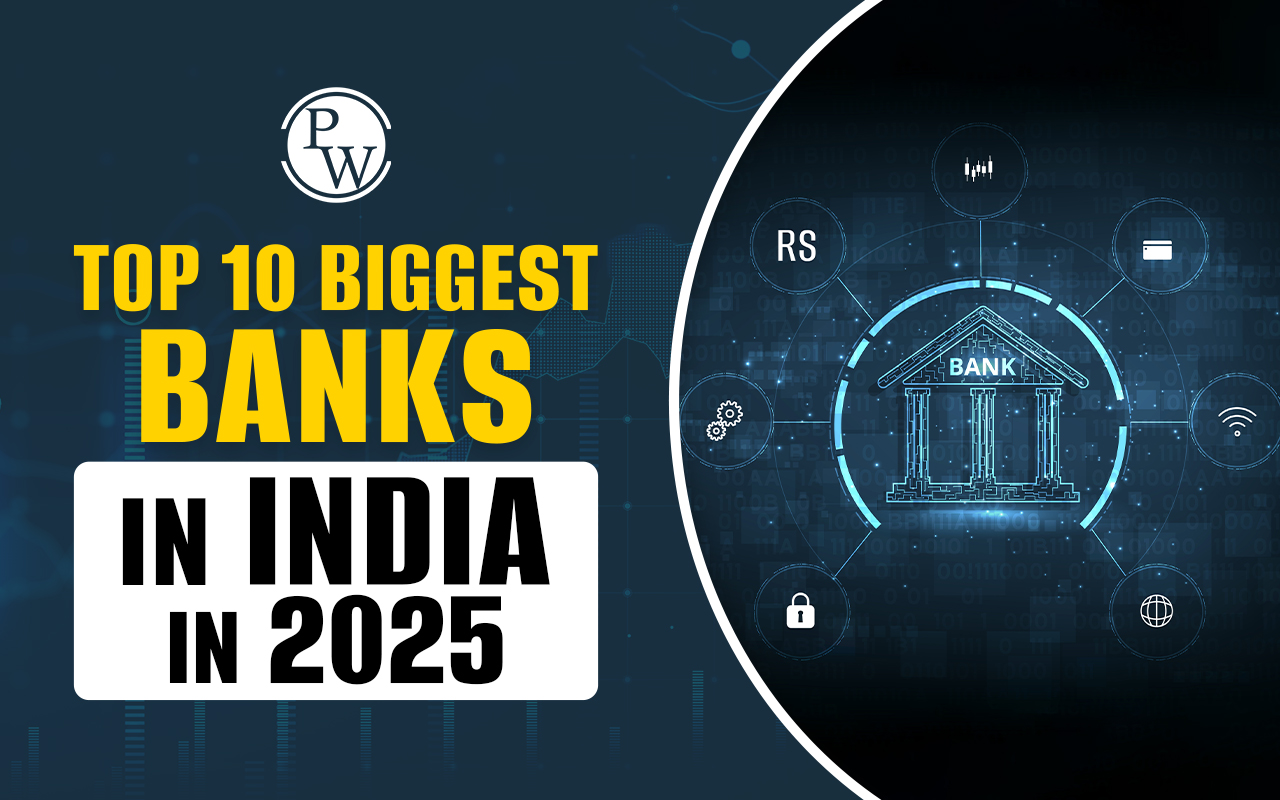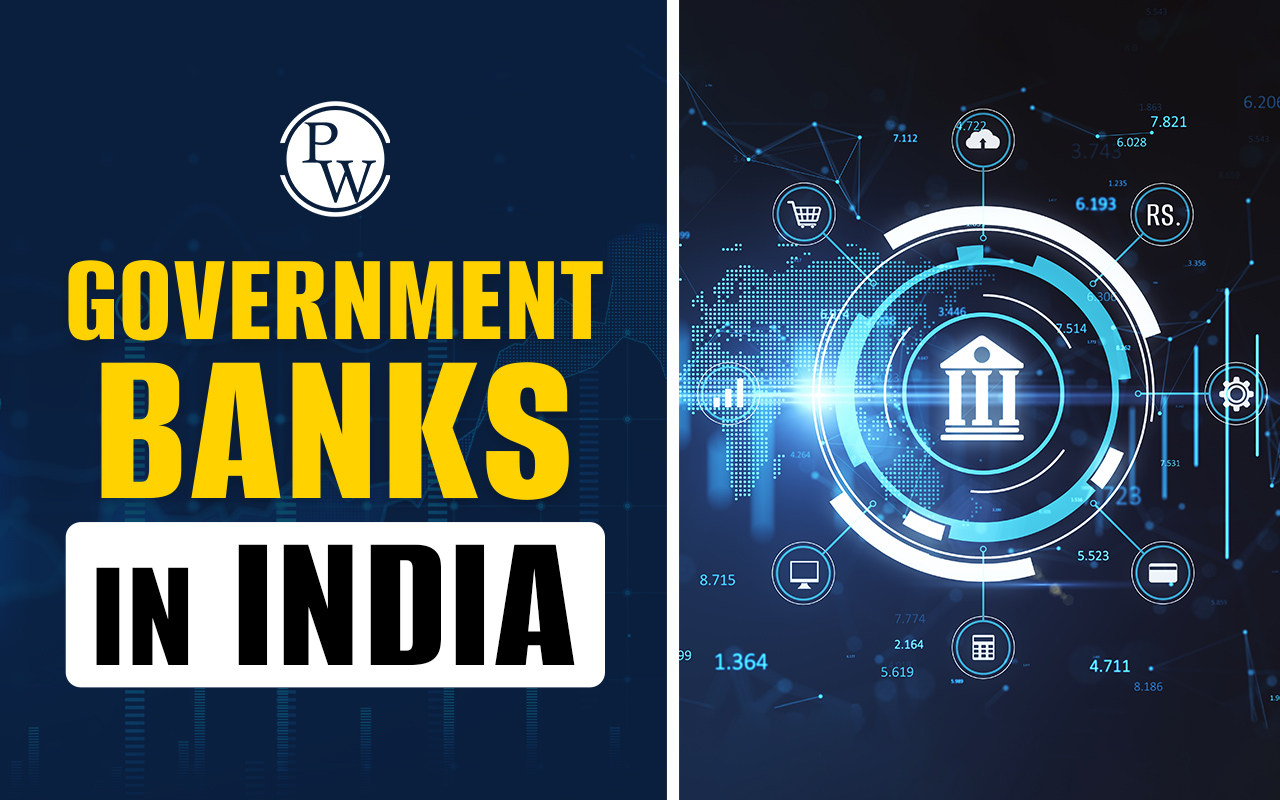
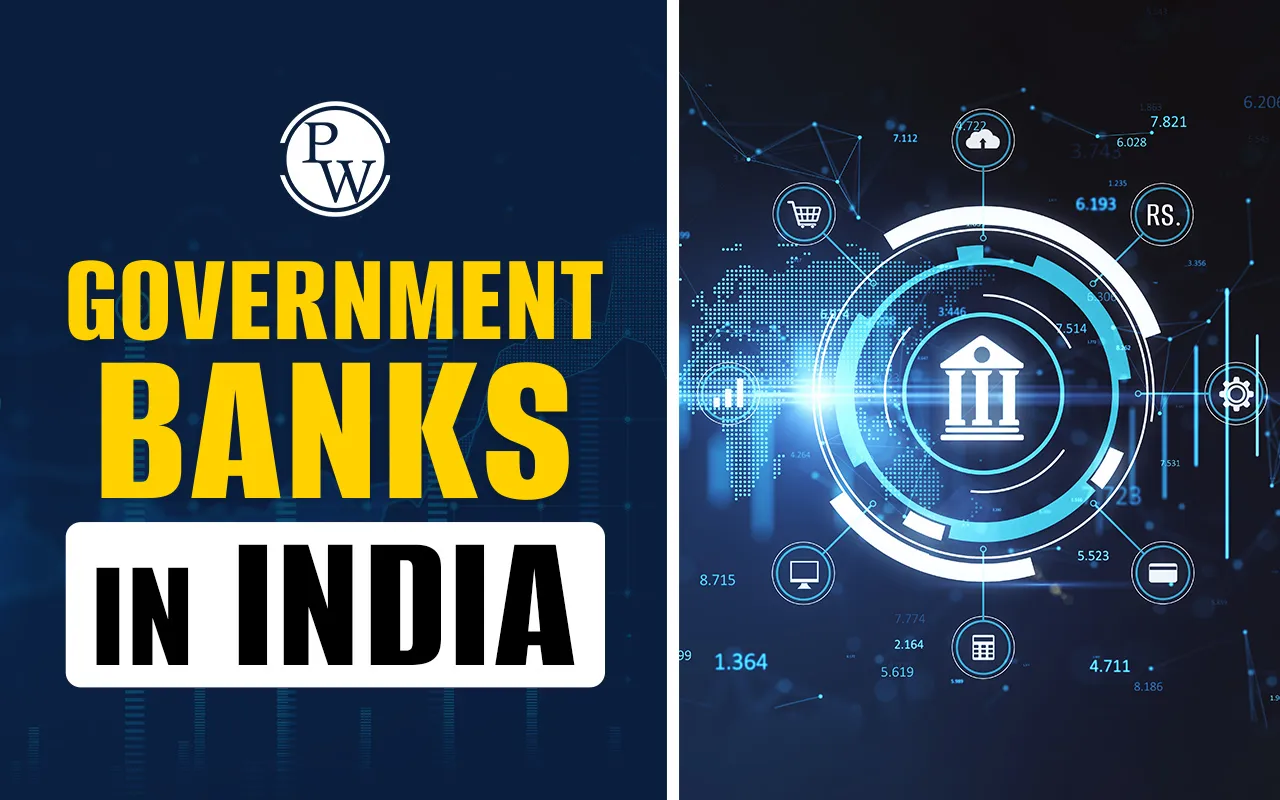
Government banks in India are financial institutions owned and operated by the government, either at the central or state level. They play an important role in providing banking services across cities, towns, and villages, helping people safely save and access their money. These banks are known for their reliability and trust, as they follow government rules and regulations to protect customers' interests. Government banks focus on financial inclusion, offering affordable loans, deposits, and schemes for the general public, especially in rural and remote areas. Their wide network and government support make them a preferred choice for millions of Indians.
Check complete details about Government Banks in India, Top 10, Largest, Features, 10 Government Banks Based on Market Cap, job options,and more below.
What are Government Banks in India?
Government Banks in India are banks governed and controlled by the Government of India. These banks provide elementary financial services to individual clients, businessmen, and rural communities all over the country. They are trusted for their large footprint, unwavering service, and concerns for public welfare.
The idea of government banking became stronger after India’s independence to make banking more accessible for everyone. Thereafter, a huge change took place during the '60s and '80s, which led to the establishment of large public banks to work in consonance with the national development programs.
These banks provide for implementation of certain schemes like Jan Dhan Yojana, Mudra Loans and Atal Pension Yojana, financial literacy, and foremost priority on sector lending and digital banks across the country.
Advantages of Government Banks
Government banks offer many benefits to customers. They are very trustworthy because they are owned by the government. These banks provide safe and secure services with government backing. They also support financial inclusion by helping people from all sections, especially rural and weaker areas. Additionally, government banks offer various schemes and loans at affordable rates to support business and personal growth.
Top Government Banks Based on 5-year Returns
The table below shows some leading government banks in India based on their average returns over the past five years. These returns reflect the banks' financial performance and growth potential, helping investors and customers understand which banks have been performing well in the long term.
|
Top Government Banks Based on 5-year Returns |
||
|---|---|---|
|
Bank Name |
Average 5-Year Returns (Approx.) |
Key Features |
|
State Bank of India |
8-10% |
Largest public sector bank with wide reach |
|
Punjab National Bank |
7-9% |
Strong presence in retail and corporate loans |
|
Bank of Baroda |
6-8% |
Extensive international and domestic network |
|
Canara Bank |
6-8% |
Focus on rural and agricultural loans |
|
Union Bank of India |
7-9% |
Diverse banking services across India |
Top 10 Government Banks in India on Market Cap
Public Sector Banks (PSBs) are banks owned and controlled by the Government of India and have played a major role in the economy of the country. These banks are ranked on the basis of their size, public trust, overall performance, and financial standing. Below are the Top 10 Government Banks in India as of 2025:
1. State Bank of India (SBI)
SBI is the largest government-owned bank in India. It offers a wide range of banking services and has a strong presence in both rural and urban areas. SBI is also known for its digital banking, international branches, and customer-focused services.
2. Punjab National Bank (PNB)
PNB is one of the oldest and most respected banks in the country. It has a large branch network and is known for offering affordable loans, especially to farmers and small businesses in rural India.
3. Bank of Baroda (BoB)
After merging with Dena Bank and Vijaya Bank, Bank of Baroda has become one of the largest public sector banks. It serves millions of customers and has a global presence in countries outside India.
4. Union Bank of India
Union Bank is known for supporting small and medium-sized businesses and using modern technology to improve customer service. It has a strong network across India.
5. Canara Bank
This Bengaluru-based bank is popular for its retail banking services and is widely trusted in the southern part of India. It also supports students, farmers, and small entrepreneurs.
6. Indian Bank
Indian Bank merged with Allahabad Bank and has since expanded rapidly. It is recognized for offering secure and technology-driven banking services.
7. Indian Overseas Bank (IOB)
Based in Chennai, IOB is known for its regional strength and has good connections with overseas operations, especially in Southeast Asia.
8. Bank of India (BOI)
Bank of India is known for its long history and a wide range of services in both retail and corporate banking. It also has a few branches abroad.
9. Bank of Maharashtra
This bank has a strong presence in the state of Maharashtra and is growing steadily in other states. It is focused on helping small businesses and rural customers.
10. UCO Bank
Headquartered in Kolkata, UCO Bank is an old and reliable institution that is expanding its digital services and helping improve financial access in semi-urban and rural regions.
Largest Government Banks in India
While many banks are performing well, a few public sector banks stand out due to their total assets, branch network, and number of customers. These are considered the largest government banks in India in terms of operational scale and contribution to the economy:
1. State Bank of India (SBI)
-
SBI is one of the largest banks in India.
-
It has more than 22,500 branches and over 60,000 ATMs spread over the country.
-
SBI serves over 45 crore customers and contributes nearly 25% of India’s total banking services.
-
SBI also stands central to the implementation of various government schemes, such as Jan Dhan Yojana, Mudra Loans, and Atal Pension Yojana.
2. Punjab National Bank (PNB)
-
PNB has more than 10,000 branches and is one of the oldest banks in India.
-
Trusted by millions, especially in northern and rural India.
-
The bank supports sectors like agriculture, education, and MSMEs (Micro, Small & Medium Enterprises).
3. Bank of Baroda (BoB)
-
BoB has more than 8,000 branches in India and is present in more than 20 countries.
-
After the merger, the bank grew very fast to assume the stature of a major global player.
-
Providing various personal loans and deposit and saving accounts to small and medium businesses is served by banking.
4. Union Bank of India
-
Union has about 9,500 branches with concentration on digital banking and financial inclusion.
-
It serves MSMEs, start-ups, and self-employed professionals with a host of banking services.
-
The bank is actively involved in implementing financial literacy programs.
5. Canara Bank
-
With more than 9,700 branches, Canara Bank has a strong presence in southern India.
-
It is known for offering education loans, home loans, and agricultural banking services.
-
Canara Bank is also focusing on green banking and digital transformation.
Features of Government Banks in India
Government Banks in India refer to those banks in India that are mostly owned by the government of India. These banks are established not only to make money but also to benefit the people, financial inclusion and facilitate the economic growth of the nation. The key features of Government Banks in India are as follows:
1. State Ownership and State Regulation :Government banks, also known as the Public Sector Banks (PSBs) are fully or mostly owned by the Government of India. The RBI regulates such banks to allow transparency and security in the banking practices. Their major policies and operations are managed by the Ministry of Finance.
2. Focus on Financial Inclusion: PSBs have set goals to ensure that they offer banking services in all regions in the nation including rural and underserved regions. They are involved to execute large Government projects like:
-
Jan Dhan Yojana – Universal banking to all
-
Mudra Yojana- loans to small business
-
Atal Pension Yojana -retirement principle
-
Stand-Up India -supporting SC/ST and women entrepreneurs
3. Branch-wide Branch and ATM Network: Government banks have one of the largest branches as well as ATM networks in India. This makes banking services accessible at far-away places. For example, SBI has over 22,000 branches and more than 60,000 ATMs across the country.
4. Priority Sector Lending: PSBs are required to give loans to sectors that are crucial for inclusive growth. These include:
-
Agriculture
-
Small and Medium Enterprises (MSMEs)
-
Education and housing
-
Renewable energy
This helps support key areas of the Indian economy.
5. Public Welfare Orientation: Unlike private banks, government banks focus more on social welfare than profit. They support national goals such as poverty reduction, disaster relief, and economic recovery, even in less profitable areas.
6. Adoption of Digital Banking: PSBs are improving digital services through online banking, mobile apps, UPI, and digital wallets. Banks like SBI and Union Bank offer platforms like YONO and UnionNXT, making banking easier and more user-friendly.
7. Employment and Career Opportunities: Government banks provide secure and stable jobs in finance, IT, operations, and customer service. Recruitment is mainly through competitive exams like:
-
IBPS
-
SBI PO/Clerk
-
RRB Exams
These jobs offer good salary, job security, and promotion opportunities.
8. Financial Stability and Security: Government banks are backed by the Indian government, which makes them a safe place for public savings. They follow global financial safety standards like Basel III and are regularly audited by the RBI. This helps maintain trust and economic stability.
List of Jobs in Government Banks in India
Government banks offer many job opportunities across different levels. These jobs are filled through competitive exams like IBPS, SBI, and other bank recruitment tests.
|
List of Jobs in Government Banks in India |
|
|
Job Category |
Job Title |
|
Entry-Level Jobs |
|
|
Officer-Level Jobs |
|
|
Specialist Officers |
|
|
Other Specialized |
|
|
Executive Roles |
|
If you are interested in building skills for a career in private banking, Physics Wallah (PW) is offering batches that cover core banking, soft skills, and interview preparation. The program includes live classes, daily practice problems, and doubt-solving sessions. This course is designed to provide practical knowledge for the banking industry. Enroll today!
Government Banks in India FAQs
Which is India's No. 1 government bank?
How many public sector banks are there in India in 2025?
Which are the top 10 government banks in India?
Which is a private bank in India?

